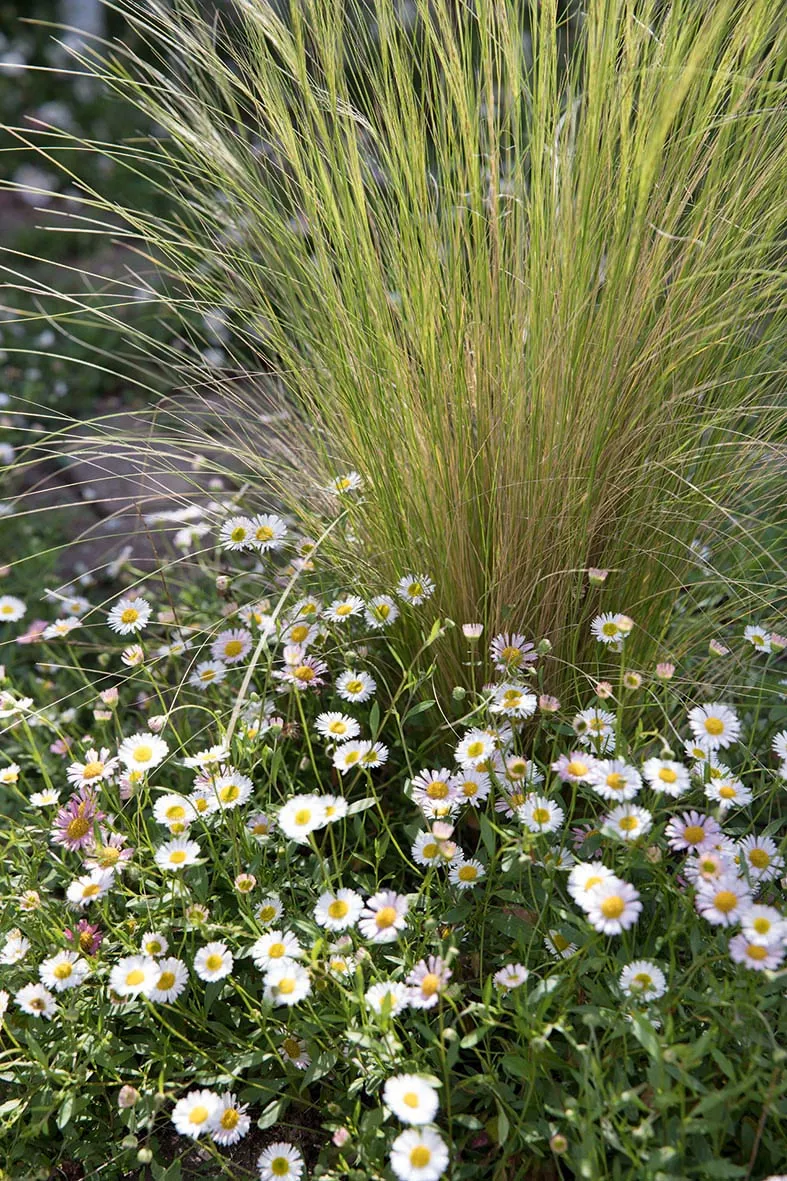It’s usually quite easy to imagine the gardens behind houses, but some are a complete surprise. Walking along a terrace of boxy 1960s’ buildings, nothing quite prepares you for ancient woodland crossed by a meandering watercress stream with a lush wetland garden in between, especially in the driest part of Kent. The backdrop, and major part of this garden, is Alder Carr woodland, established and coppiced centuries ago to supply charcoal for the gunpowder industry in Faversham, a habitat described by the Woodland Trust as: ‘Wild, transient, boggy and rare. Trees like Alder, Willow and Birch dominate on wet soils,
while sedges, ferns and mosses flourish beneath’. How appropriate then that the owner of this very special place should be named after two of its most prolific plants: Fern Alder.
A designer who has show gardens at Chelsea, Hampton Court Palace and Nagasaki under her belt, Fern knew what would grow, but unlike many confronted with a blank canvas, she didn’t sit down and order lots of plants. “The plants arrived organically. My first purchase – Persicaria amplexicaulis – came from a car boot sale, and it flourished. I wanted to take a light touch: gradually adding things I knew would love it here, then self-seeders: Cardamine pratensis, meadowsweet and Lythrum salicaria arrived, courtesy of the birds or the wind.” Discover more about the garden below.
The woodland garden in brief
What Small, terraced garden leading to woodland. Where Kent. Soil Neutral, almost peat soil, on chalk. Size 10m x 800m. Climate Temperate, west-facing garden with below average rainfall. Hardiness zone USDA 9.
Designing and planting a woodland garden
Woodland plants

Persicaria amplexicaulis (Fern’s first purchase for this garden), pink Diascia personata and yellow foxglove Digitalis lutea grow happily in woodland soil.

Marginal plantings of Rodgersia aesculifolia, candelabra primulas and royal fern Osmunda regalis line the bridge crossing a stream in Fern’s garden. Self-seeded teasel (Dipsacus fullonum) and angelica proliferate in this boggy soil among Japanese forest grass (Hakonechloa macra ‘Aureola’).

Pilosella aurantiaca self-seeds wildly all over the garden, especially on the bridge and banks of the stream where it enjoys a boggy footing.

Stipa tenuissima and Erigeron karvinskianus self-seeded up on the small terrace on the near side of the stream. Fern is always happy to welcome self-seeders.

Around 300 spent tyres, partly covered with soil and topped with bark were used to make this raft of a path that is flanked with bright-green Hakonechloa,
Silene fimbriata, pheasant grass (Anemanthele lessoniana), Geranium pratense and Sanguisorba minor with Sambucus nigra f. porphyrophylla ‘Eva’ in the background.
Designing a woodland garden
Many of Fern’s plants have come from local events where plants are swapped. Fern is one of the guiding lights in the Faversham gardening world; she volunteers, cares for trees, clears streams and is one of the pioneers of the town’s successful Open Gardens event that sees around 30 gardens, including Fern’s own, open across the town most years in June.
Heralded by a pair of Viburnum plicatum f. tomentosum ‘Mariesii’ the garden melds gradually into the woodland, and Fern has approached this undisturbed wilderness with its tangle of woody species, brambles and nettles with care. Fallen trees, metal frames and buried rubble had to be moved to plant the golden-leaved form of grey alder, Alnus incana ‘Aurea’ and Metasequoia glyptostroboides, so small patches were cleared with a brush cutter, covered with cardboard and a layer of woodchip, and then watched patiently for a year before planting. “As garden makers, we try to take control, but I’m hoping to achieve a balance between my needs and those of wildlife, curating this space in a sustainable, thoughtful way. I’m an interloper here, among the frogs and foxes, slowworms, moles, bats and birds: I’ve even seen woodcock.”








